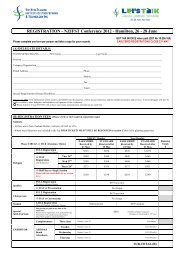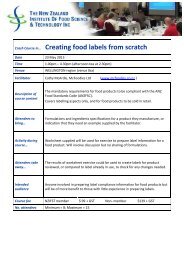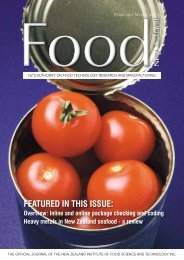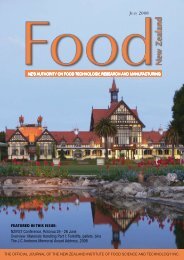featured in this issue - NZIFST - The New Zealand Institute of Food ...
featured in this issue - NZIFST - The New Zealand Institute of Food ...
featured in this issue - NZIFST - The New Zealand Institute of Food ...
You also want an ePaper? Increase the reach of your titles
YUMPU automatically turns print PDFs into web optimized ePapers that Google loves.
al flora used to produce red smear cheese [6] where the activity<br />
may also be mediated, at least <strong>in</strong> part, by bacterioc<strong>in</strong> production.<br />
A novel addition to the hurdle controls available for cheese<br />
production is the use <strong>of</strong> bacteriophages [9, 22], and papers have<br />
now described the control <strong>of</strong> Salmonella [23], Staphylococcus<br />
[7] and L. monocytogenes [2].<br />
A nice study <strong>of</strong> hurdle technology <strong>in</strong> cheese [32] looked at<br />
the manipulation <strong>of</strong> conditions needed to ensure that C. botul<strong>in</strong>um<br />
was unable to grow <strong>in</strong> cheese spread. <strong>The</strong>y used data from<br />
304 treatment comb<strong>in</strong>ations (lots) and varied the salt concentration,<br />
pH, a w<br />
and disodium phosphate concentration. Storage<br />
<strong>of</strong> the cheese was at 30°C for 28 days. At water activity values<br />

















